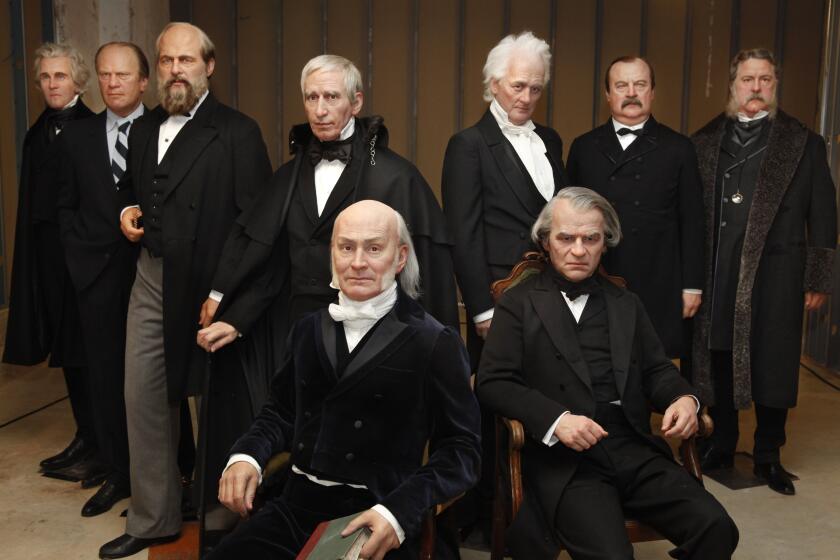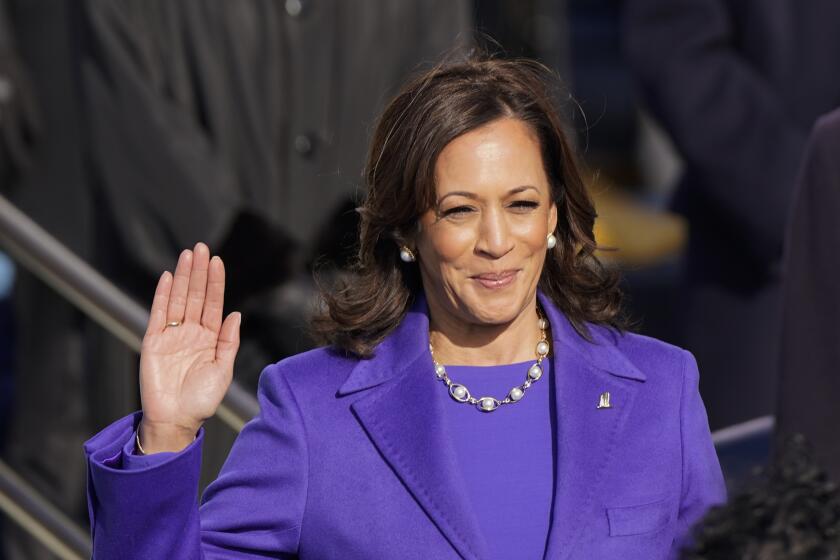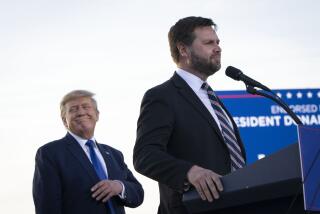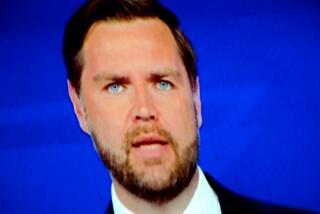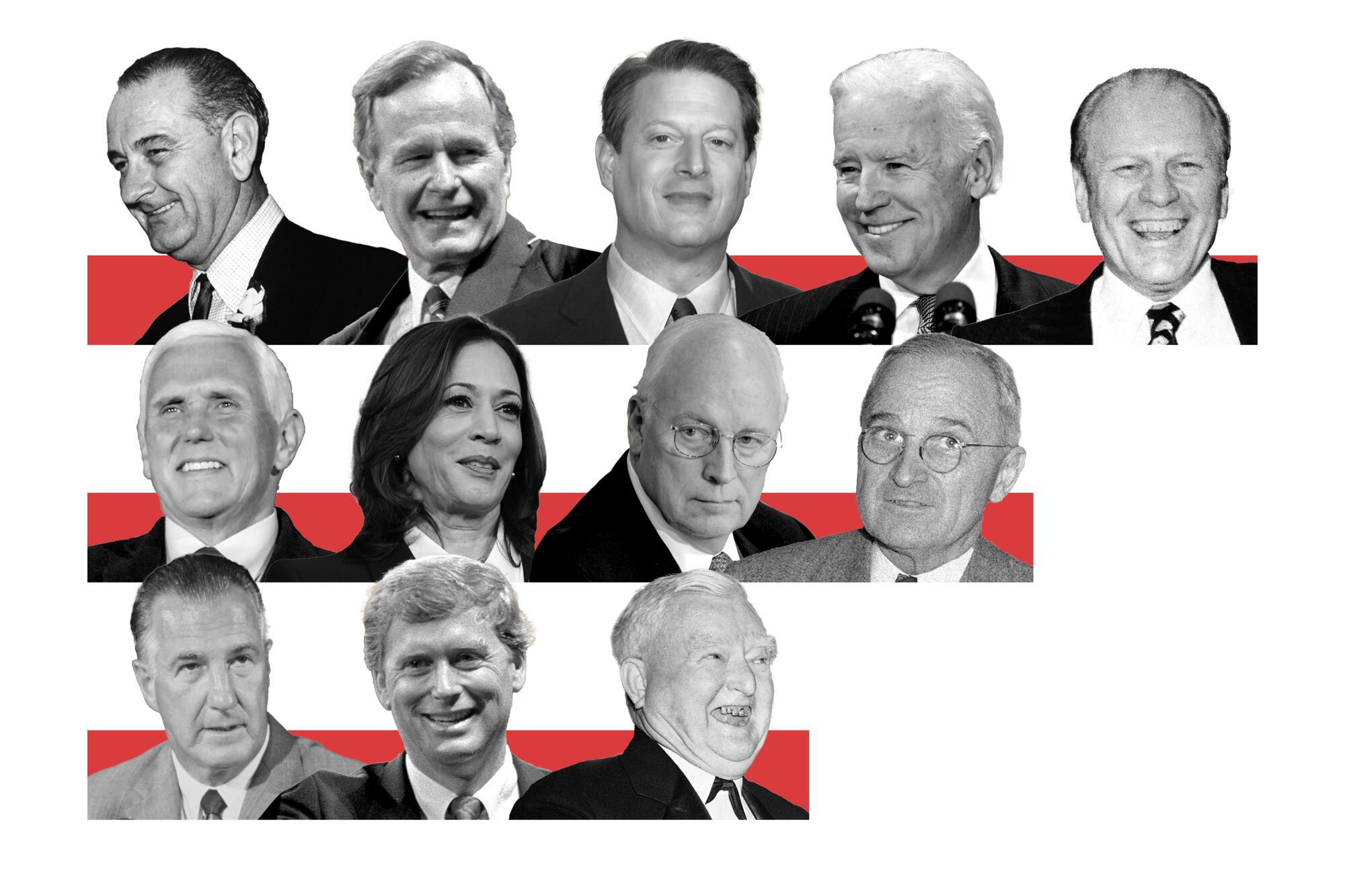
- Share via
The campaign to serve as Donald Trump’s running mate has unfolded in an unusually public way, including a parade of potential vice presidents attending the New York trial that led to his historic criminal conviction. Even though Trump has suggested he might not name a running mate until this month’s Republican convention, there has been no shortage of tea-leaf-reading by journalists and pundits: Which candidate got a rough reception from conservative media? Who shared a meal with the former first family? Who defended Trump most vigorously against the despised judge or prosecutor of the moment?
Which potential running mate would do the best job as vice president may be of less interest to many commentators. But that is the most interesting question to us — and the most important one for the country.
That’s why, when we conducted our most recent Presidential Greatness Project survey of scholars, we asked the experts to evaluate vice presidents as well as presidents. The resulting rankings — which spanned from John Nance “Cactus Jack” Garner, Franklin D. Roosevelt’s first vice president, to Kamala Harris — are intriguing.
This Presidents Day, Trumpism is affecting assessments of Obama, Reagan and others. Today’s politics have also diminished the likes of Jackson and Wilson.
Al Gore topped the list as the greatest modern vice president, followed closely by Joe Biden — who also recently entered the presidential rankings in the top third. Lyndon B. Johnson (Kennedy), George H.W. Bush (Reagan) and Walter Mondale (Carter) filled out the rest of the top five.
Nixon veep Spiro Agnew — who resigned from office following a bribery scandal — ranked last, with Dan Quayle (George H.W. Bush), Henry Wallace (FDR), Garner and Alben Barkley (Truman) rounding out the bottom five.
Harris and Mike Pence — who served under the last-ranked president, Trump — both came in the bottom half of vice presidents, at Nos. 11 and 13 out of 18, respectively. The low rankings of the current vice president and her predecessor reflect the experts’ view that they weren’t particularly active partners in their administrations.
My grandmother was a Kamala, and now, so is my vice president. Why that means so much to me and so many others.
That is a departure from the old conventional wisdom about the role of vice presidents, which boiled down to serving as a marginal electoral asset — by, say, representing a key state or constituency — and, essentially, maintaining a pulse. Historically, vice presidents were like offensive lineman in football: If their names were in the news, it probably wasn’t good.
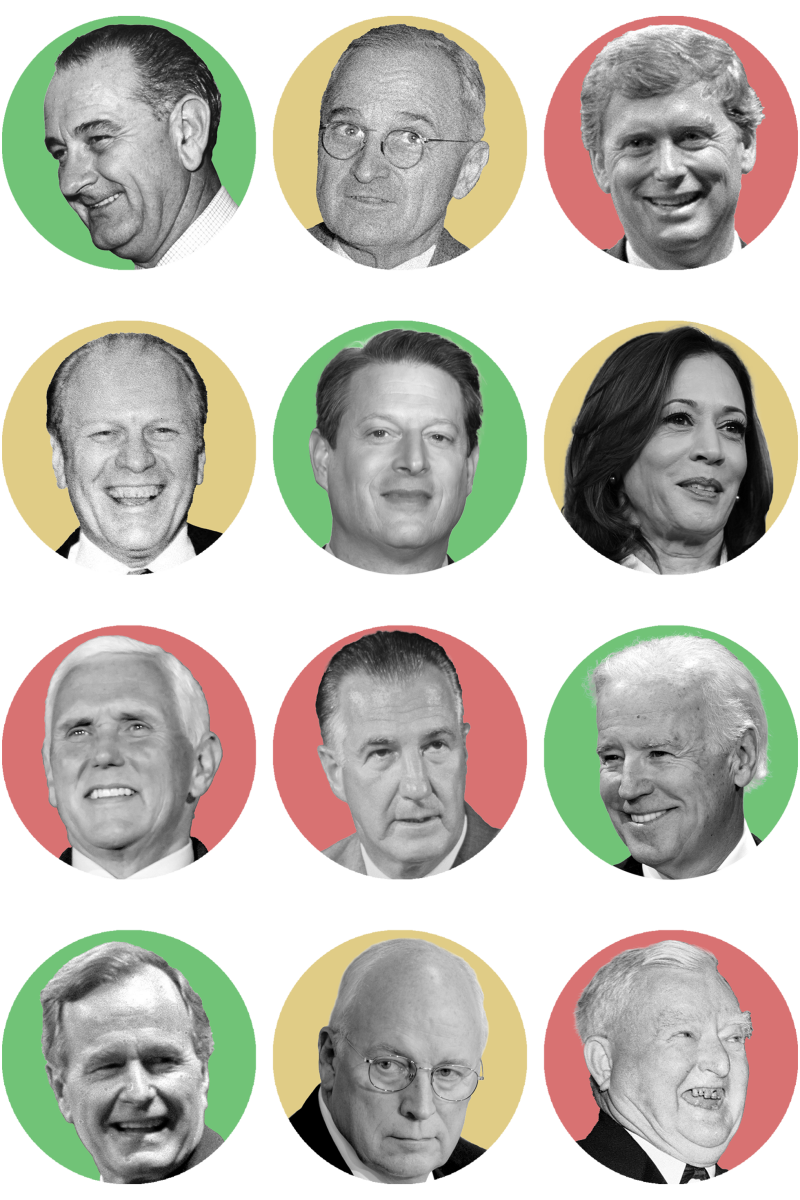
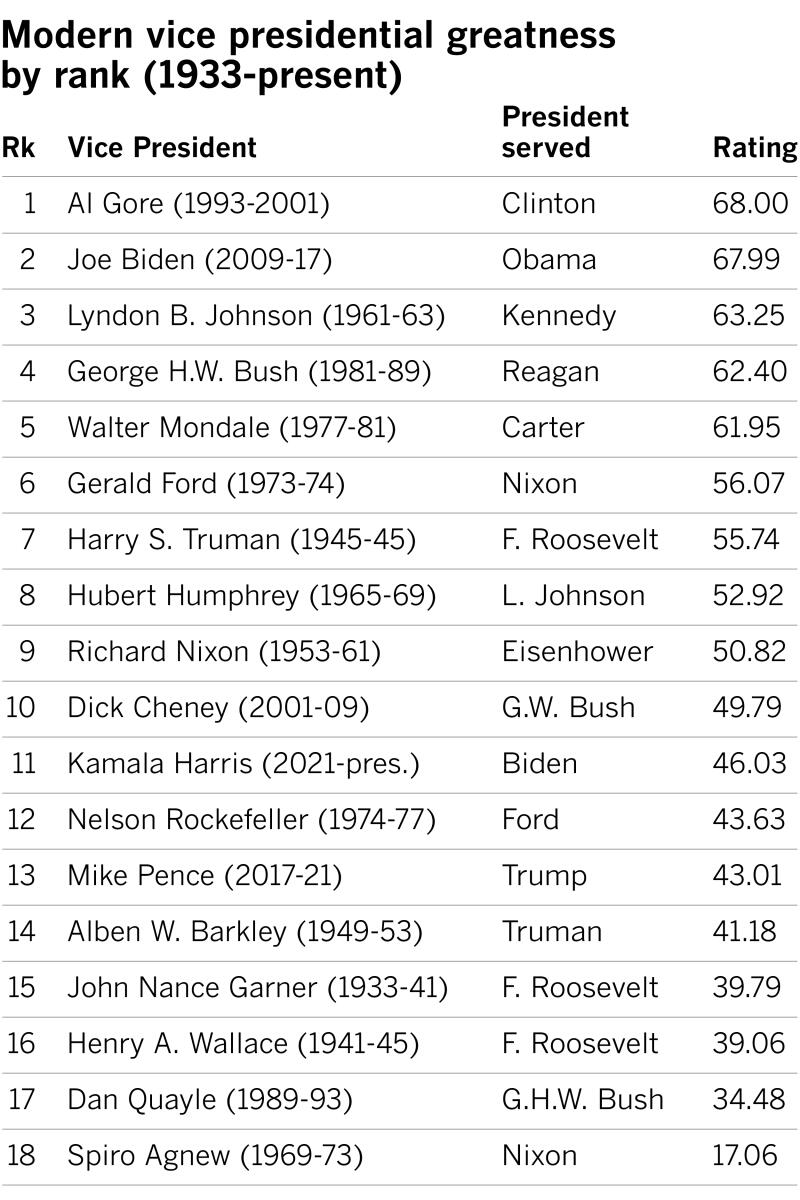
Top to bottom, left to right: Vice presidents Lyndon B. Johnson, Harry S. Truman, Dan Quayle, Gerald Ford, Al Gore, Kamala Harris, Mike Pence, Spiro Agnew, Joe Biden, George H.W. Bush, Dick Cheney, John Nance Garner.
But the vice presidency has expanded dramatically in prominence in recent decades. Garner’s infamous comparison of the position to a bucket of warm “spit” (to put it delicately) may have been accurate when he held office under FDR, but modern vice presidents can be policymaking partners to presidents. Today, successful vice presidents provide advice, work with Congress and carry the president’s message.
Beyond the overall rankings, we were able to evaluate our most recent vice presidents — going back to Mondale — across several dimensions of the contemporary vice presidency. These dimensions further underscore the policy partner component of the institution.
For example, in addition to being regarded as the greatest modern vice president, Gore topped the field as a policy advisor, reflecting projects such as his “reinventing government” initiative to shrink the bureaucracy and make government less expensive and more efficient. Biden scored high on relations with Congress, largely for his “big … deal” role in helping shepherd the Affordable Care Act into law. Dick Cheney, who wasn’t rated highly overall, was nevertheless seen as an important policy advisor to President George W. Bush.
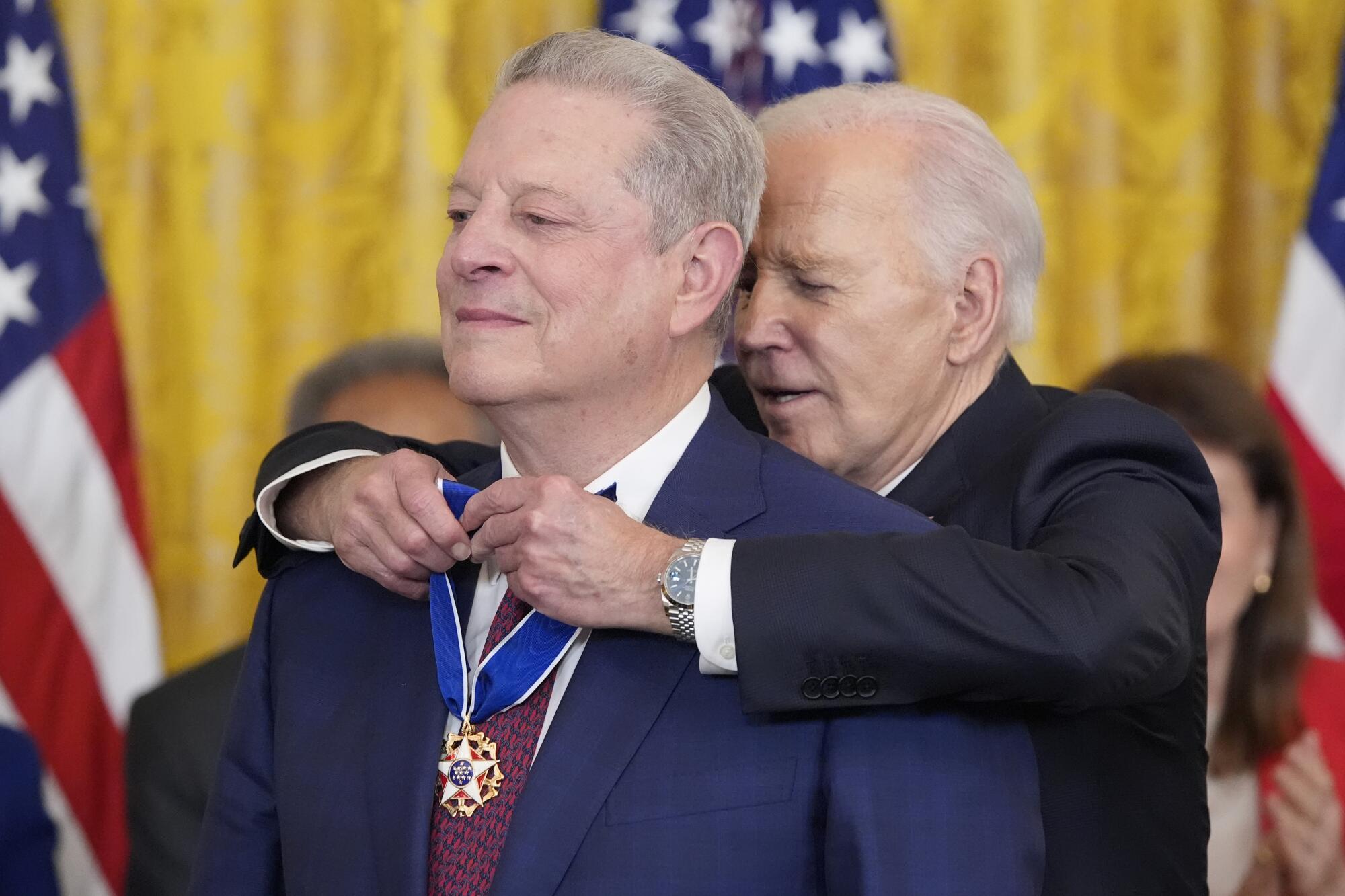
When we asked our respondents to provide their own definitions of vice presidential greatness, we received a wide range of responses, but several concepts and themes recurred consistently. The words that appeared most frequently in these definitions included “policy,” “effective,” “support,” “office” and “agenda” — all typically related to White House policy more than electoral politics.
This jibes with the answers to another question we asked concerning the characteristics that are most important in a vice president. The respondents indicated that the ability to serve as a policy advisor or presidential surrogate was far more significant than the conventional focus on electoral politics.
Many of the potential running mates Trump is considering at least have the experience to become successful vice presidents. Governors such as Ron DeSantis of Florida and Doug Burgum of North Dakota have executive experience, as do the apparently free-falling Kristi Noem of South Dakota and Trump’s primary season nemesis, former South Carolina Gov. Nikki Haley. Sens. Tim Scott of South Carolina, J.D. Vance of Ohio or Marco Rubio of Florida could serve as a bridge to Congress. Any of them could have the makings of effective White House policy partners given the opportunity and the inclination — neither of which is a given considering the fate of the Pence vice presidency.
That’s unfortunate, because a running mate who can provide stability and serve capably is especially important this year. Given the advanced age of both candidates, as well as the potential for Trump’s legal woes to follow him into a second term, there is a greater chance than usual that either running mate could become president.
There’s no Mt. Rushmore for vice presidents. But if there were, our expert survey suggests it would be shaped by productive governing partnerships rather than political ticket-balancing. In a year of broad public dissatisfaction with the presidential candidates and acute awareness of their flaws, many voters may well look for that potential in the running mates.
Justin Vaughn is an associate professor of political science at Coastal Carolina University. Brandon Rottinghaus is a professor of political science at the University of Houston.
More to Read
A cure for the common opinion
Get thought-provoking perspectives with our weekly newsletter.
You may occasionally receive promotional content from the Los Angeles Times.
